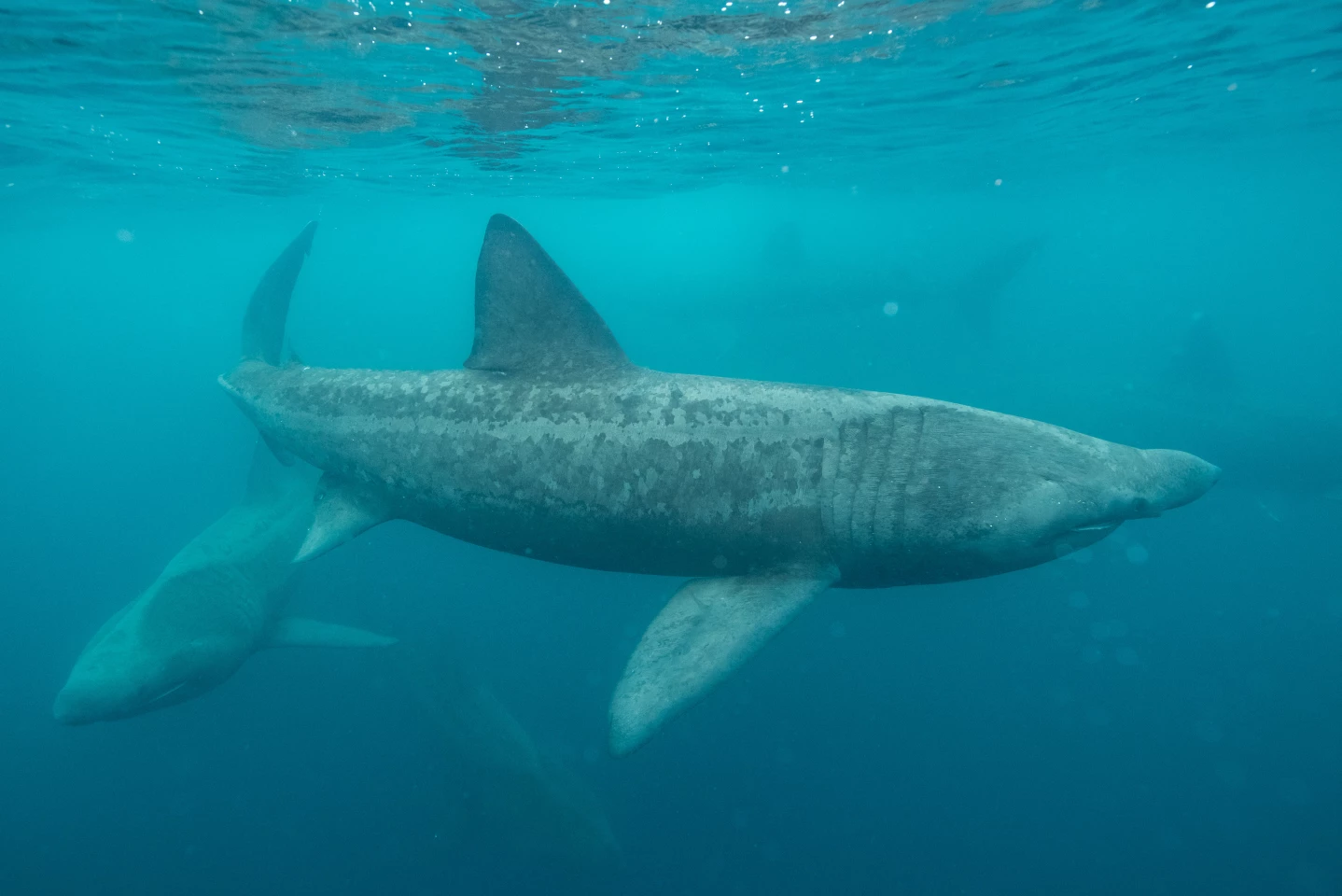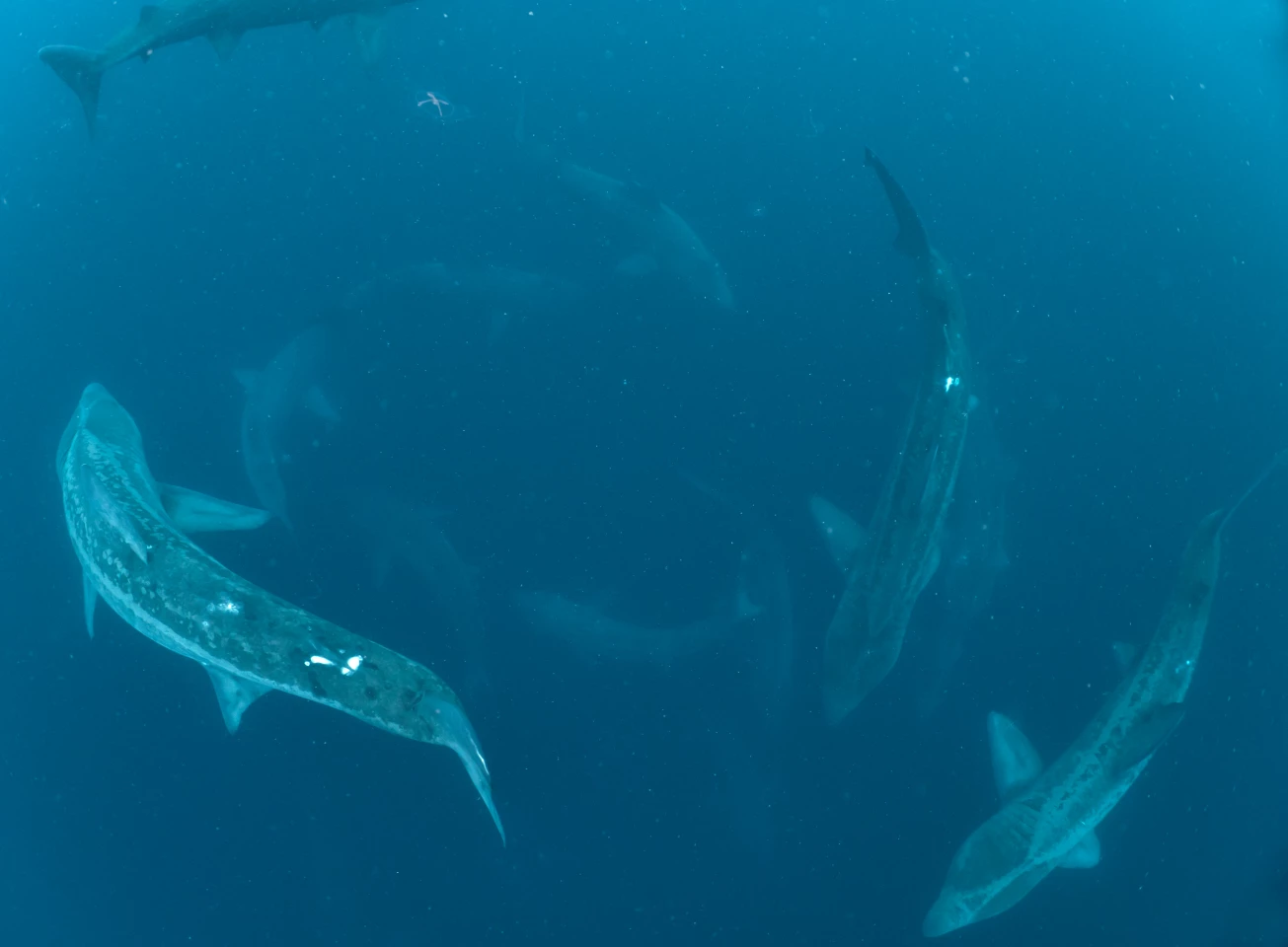Even though the plankton-eating basking shark is the world's second-largest fish, much of its life has eluded observation. Now, however, researchers have determined that the usually solitary animals find mates by meeting up and circling around one another, forming underwater shark-rings.
Over the past 40 years, such circling behaviour has occasionally been observed off the North Atlantic coast of Canada and the US. The three-dimensional donut-like shape formed by the sharks' swimming pattern is known as a torus.
Previously, the purpose of these get-togethers was not fully understood. In order to find an answer, scientists from the Irish Basking Shark Group and England's Marine Biological Association used underwater cameras and aerial drones to study basking shark toruses off the coast of County Clare, Ireland. A total of 19 "circling groups" were documented at nine locations in the region, from 2016 to 2021. The number of sharks in each group ranged from six to 23.

It was initially observed that the animals weren't feeding while engaged in the behaviour, so sustenance was apparently not a motivating factor. A number of other findings, however, indicated that the sharks were quickly checking one another out, then selecting mates with whom they would pair off.
For one thing, each group consisted of roughly equal numbers of sexually mature males and females. In many cases, the females temporarily took on a paler-than-normal body color, which has been linked to a willingness to mate in other shark species.
Additionally, although the toruses lasted anywhere from several hours to several days, each shark within each group "associated" with most of the others in the group within a matter of minutes. These interactions – initiated by both males and females – took the form of gentle fin-to-fin and fin-to-body touching. Males would also roll over to expose their undersides (and thus their reproductive organs) to following females.

"How usually solitary basking sharks find a mate in the ocean’s expanse has been an enduring mystery," said the Marine Biological Association's Prof. David Sims, lead author of the study. "Incredibly we now find that a courtship torus not only forms but acts like a slow motion 'speed-dating' event for assessing lots of potential mates in one go. It is astonishing that this wonder of the natural world has remained hidden for so long, presumably because circles most often form at depth away from surface observation, which could explain why mating itself has never been seen."
It is now hoped that the scientists' findings will help bolster basking shark conservation efforts in the area. A paper on the research was recently published in the Journal of Fish Biology.
You can see the sharks in torus-forming action, in the video below.
Source: Marine Biological Association






